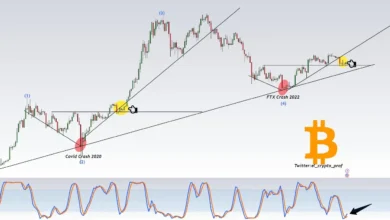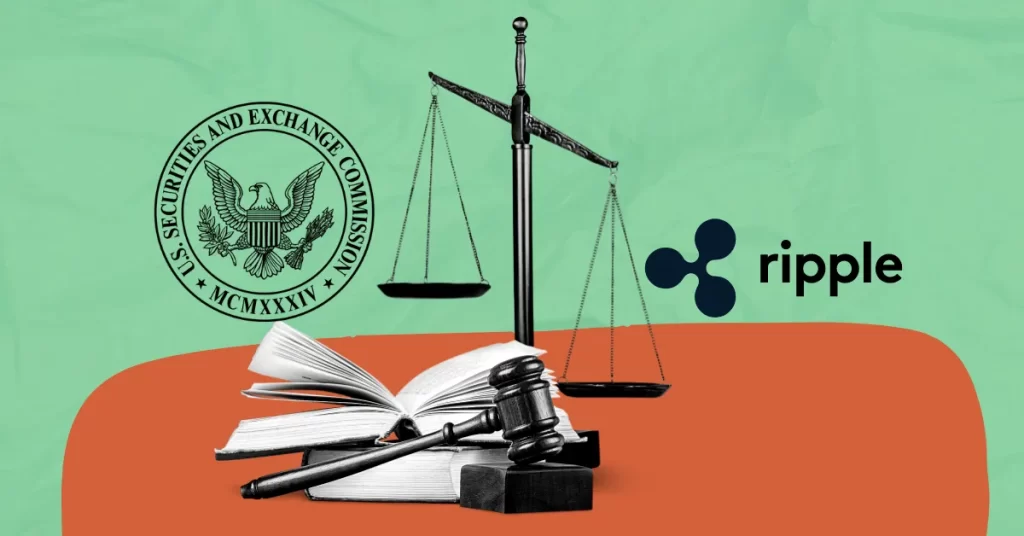
Crypto Trading Platform Choose Smart, Trade Safer
Learn how to pick the best crypto trading platform, compare features, fees, and security, and master strategies for profitable, secure digital asset trading.
The surge of digital assets has transformed how people invest, speculate, and hedge. At the center of this transformation sits the crypto trading platform—the software and marketplace where buyers and sellers meet, orders are matched, assets are secured, and portfolios are monitored. Whether you are a first-time trader or a seasoned market participant, your choice of platform directly affects your execution speed, liquidity access, fee load, and ultimately your returns. Yet the landscape is crowded, the jargon is dense, and every website promises the moon.
This in-depth guide demystifies the crypto trading platform from top to bottom. You will learn how a platform works under the hood, what features actually matter, how to compare fees and security, and which strategies align with your risk profile. We will also address essential topics such as custodial vs. non-custodial wallets, proof-of-reserves, order types, liquidity depth, KYC/AML compliance, and derivatives. By the end, you will know exactly how to evaluate a platform for reliability, safety, and performance—and how to trade smarter with confidence.
What Is a Crypto Trading Platform
A crypto trading platform is an online venue where you can deposit funds, convert fiat to crypto, trade assets such as Bitcoin, Ether, and stablecoins, and withdraw funds to your wallet or bank. It combines an exchange engine, custody infrastructure, user interface, market data, and risk controls. Some platforms operate as centralized exchanges (CEXs) that match orders in a traditional order book, while others are decentralized exchanges (DEXs) that execute trades via automated market makers (AMMs) and smart contracts. Many leading platforms blend both, providing spot markets, margin and futures, on-chain swaps, staking, and a mobile app to manage everything on the go.
A high-quality crypto trading platform does more than list coins. It offers robust liquidity, granular order types, strong security practices like cold storage and two-factor authentication (2FA), transparent fees, and responsive customer support. The best platforms also invest in education and tools—price alerts, advanced charting, API access, and copy trading—to support different trading styles.
How a Crypto Trading Platform Works Behind the Scenes

To appreciate the differences between platforms, it helps to trace the trade lifecycle. When you place a market order, your request is routed to the exchange’s matching engine and filled against the order book at the best available prices. A limit order enters the book and waits until the market hits your price, potentially earning maker fee discounts. If you trade on a DEX, a smart contract calculates your output based on pool reserves; larger trades can incur slippage if liquidity is thin.
The platform’s risk system monitors balances, margin levels, and liquidation thresholds. If you borrow funds for margin trading, your position is continuously marked to market; a steep adverse move can trigger a partial or full liquidation to protect the platform and counterparties. After the trade, custody systems update balances and, on centralized venues, sweep excess funds into cold wallets for long-term storage. High-quality platforms publish proof-of-reserves or undergo third-party audits to verify that customer assets are fully backed.
Key Features to Evaluate Before You Sign Up
Security Architecture and Custody
Security is the non-negotiable foundation of any crypto trading platform. Look for multi-signature cold storage, hardware security modules, and strict segregation of client assets from corporate funds. Strong 2FA, allow-listing withdrawal addresses, biometric login on mobile, and session management are baseline. Platforms should follow KYC/AML standards and offer account activity logs so you can monitor logins, IPs, and device changes. The presence of bug bounty programs, incident response playbooks, and independent audits indicates a mature security posture.
Liquidity and Market Depth
Tight spreads and deep order books reduce your trading costs. A platform with robust liquidity lets you enter and exit positions with minimal slippage, especially during volatile moves. For active traders, access to multiple stablecoin pairs, cross-collateral, and perpetual futures with healthy funding markets is a competitive advantage. If you trade niche tokens, confirm that the venue actually has volume and a reliable price discovery process.
Fees, Spreads, and Transparency
Fees come in many flavors: maker/taker fees, withdrawal fees, funding rates for perpetuals, and conversion fees when moving between fiat and stablecoins. Some platforms offer tiered fee schedules based on 30-day volume or loyalty tokens. Others emphasize zero-commission trading but widen spreads. Compare effective total cost rather than a single number, and confirm that the platform clearly discloses fee updates. Transparent platforms also detail listing criteria, delisting policies, and market surveillance to prevent manipulation.
Supported Assets and Product Range
A best-in-class crypto trading platform supports a balanced mix of large caps, emerging altcoins, DeFi tokens, and staking options, without listing every fad. Check whether the platform offers spot trading, margin, options, futures, OTC desks for block trades, and earn products like staking and savings. If you build tools, REST/WebSocket APIs, FIX gateways, and sandbox environments help you integrate bots or analytics.
User Experience and Tools
From onboarding to placing a trade, the interface should be frictionless. Beginners benefit from simple trade tickets, guided walkthroughs, and contextual education. Power users need advanced charting, depth charts, order triggers like stop-loss and take-profit, and customizable workspaces. On mobile, look for quick biometric login, price alerts, and seamless fiat on-ramps. If you plan to automate, confirm the platform supports trading bots, webhooks, and reliable WebSocket feeds for real-time data.
Centralized vs. Decentralized Which Crypto Trading Platform Suits You?
Centralized exchanges provide familiar account models, fiat ramps, and customer support, making them ideal for newcomers and compliance-conscious institutions. They manage custody, run the matching engine, and often deliver the deepest liquidity. The trade-off is counterparty risk: you trust the platform to safeguard deposits and maintain solvency. That’s why proof-of-reserves, segregated accounts, and clear governance matter.
Decentralized exchanges let you trade from a non-custodial wallet—you hold the keys, you authorize each transaction on-chain. This eliminates centralized custody risk but introduces gas fees, potential smart contract vulnerabilities, and variable liquidity. DEXs excel for on-chain DeFi strategies, cross-chain swaps via bridges, and long-tail assets that centralized venues may not list. Some traders combine both: they use a CEX for fiat on-ramping and derivatives, then move funds to a DEX for yield farming and on-chain strategies.
Building a Safer Setup: Wallets, Keys, and Operational Hygiene
Even the most secure crypto trading platform can’t protect you if your personal setup is weak. Use a hardware wallet for long-term storage and keep only active capital on exchanges. Enable 2FA with an authenticator app, not SMS. Store backup codes offline. Set withdrawal allow-lists so funds can only leave to trusted addresses. For teams, implement multi-user approvals, role-based permissions, and distinct accounts for trading, treasury, and operations. Educate yourself about phishing, fake support agents, and malicious browser extensions. Operational discipline compounds like interest—it quietly prevents disasters.
How to Compare Fees and Reduce Trading Costs
Fees erode returns, especially for active traders. Start by mapping the full cost stack. On spot markets, you pay maker or taker fees; adding limit orders to the book often yields lower rates. On perpetual futures, periodic funding payments flow between longs and shorts; strategies that align with the funding bias can reduce net cost. Withdrawal fees vary by network; Layer-2 routes may be cheaper and faster for certain assets. Some platforms offer fee rebates for holding a native token or meeting certain volume thresholds. If you frequently convert fiat to crypto, consider the cost of bank transfers, card processing, or P2P desks. A holistic view of fees can save more than chasing slightly tighter spreads.
Essential Order Types and When to Use Them
Market vs. Limit
A market order prioritizes immediacy; it fills now at the best available price. Use it when momentum matters or liquidity is deep. A limit order specifies your price; it avoids bad fills and can earn maker rebates. Use it when patience is possible or spreads are wide.
Stop-Loss and Take-Profit
Stop-loss orders are your circuit breakers. They close losing positions before losses spiral, which is vital in fast crypto markets. Take-profit orders lock in gains without babysitting charts. Many platforms let you bracket entries with both to automate risk control.
Trailing Stops and OCO
A trailing stop moves with the market, protecting gains as price rises. One-Cancels-the-Other (OCO) pairs a stop with a limit; when one triggers, the other cancels. OCO is powerful for range trading because it enforces discipline on both sides of the trade.
Spot vs. Margin vs. Derivatives
Spot trading is straightforward: you buy and own the asset. Margin introduces leverage by borrowing funds; it amplifies gains and losses and demands strict risk management. Derivatives—especially perpetual futures and options—let you long or short assets, hedge portfolios, or express volatility views. Perpetuals mimic spot with funding payments, while options provide asymmetric payoffs for more nuanced strategies. Beginners should master spot first, then explore leverage cautiously with clear liquidation thresholds and pre-defined position sizing rules.
Research and Due Diligence Separating Signal from Noise
Before opening an account on any crypto trading platform, scrutinize the company’s licensing, jurisdiction, and compliance stance. Read the docs on asset custody, insurance coverage, and incident history. Evaluate the status page for transparency and uptime. Confirm customer support channels and response times. For tokens, read the whitepaper, assess tokenomics, team backgrounds, roadmap progress, and community traction. Cross-check on-chain data, developer activity, and liquidity distribution. Resist hype cycles; let verifiable metrics, not social buzz, guide your decisions.
Risk Management That Actually Works
Successful traders obsess over risk, not just entries. Define your maximum portfolio drawdown, set a per-trade risk budget (often one to two percent of equity), and stick to stop-losses. Diversify across uncorrelated assets and avoid pyramiding into illiquid coins. Use position sizing calculators to translate conviction into controlled exposure. For derivatives, respect maintenance margin and keep a cash buffer to avoid forced liquidations. Document your rules and review them weekly; consistency, not hero trades, compounds capital.
Psychology and Process: Build an Edge You Can Repeat
Markets tempt you to chase, revenge trade, or over-size. Combat this with a written trading plan that covers setups, timeframes, sizing, and exits. Track your trades in a journal, noting emotional state, reasoning, and post-mortems. Limit screen time to defined sessions. Automate alerts so the platform pages you when conditions align. Over time, your process—supported by the right crypto trading platform—becomes your edge. The goal isn’t perfection; it’s removing unforced errors and letting a statistical edge play out.
Automation APIs, Bots, and Copy Trading
If you’re systematic, look for a platform with stable WebSocket feeds, low-latency APIs, and granular rate limits. This enables strategies like market-making, mean reversion, and trend-following without manual intervention. Many platforms integrate copy trading, letting beginners mirror vetted strategies; evaluate track records carefully and consider latency, slippage, and divergence risk. Automation is a force multiplier, but it can also scale mistakes. Start small, test in paper trading environments, and monitor bots like you would a junior trader.
Compliance, Taxes, and Reporting
Regulatory expectations keep evolving, and responsible platforms adapt. Verify KYC/AML requirements for your region and ensure the platform provides clear tax reports, trade exports, and cost basis tools. Some exchanges integrate with tax software and provide FIFO/LIFO options. If you operate as a business or fund, look for account sub-structures, audit trails, and multi-user roles. Meticulous records reduce headaches and reveal insights about your own performance.
Choosing the Right Crypto Trading Platform for Your Needs
For Beginners
If you are new, prioritize simplicity, education, and customer support. A guided onboarding, an intuitive buy/sell interface, fiat on-ramps, and transparent spot fees will help you avoid early mistakes. Choose a venue with strong security defaults and a clear help center. Start with blue-chip assets and small position sizes until you build fluency.
For Active Traders
You need speed, liquidity, and tools. Evaluate order execution, latency, depth of book, and derivatives variety. Compare tiered fees and maker incentives. Test charting, hotkeys, and OCO/conditional orders. Confirm the API is reliable for your bots and that the mobile app can handle urgent tasks when you’re away from the desk.
For Long-Term Investors
You may trade infrequently but care deeply about custody and staking. Look for cold storage, proof-of-reserves, and transparent staking yields with clear lockup terms. Auto-invest features, recurring buys, and portfolio analytics add convenience while you focus on accumulation and risk control.
Common Mistakes to Avoid
New users often treat a crypto trading platform as a black box and skip due diligence. They jump into illiquid coins, ignore slippage, trade without stop-losses, and leave large balances in hot wallets. Others underestimate the impact of fees or the risk of over-leveraging in perpetuals. Some chase airdrops or yield without reading smart-contract audits. Each mistake is avoidable. Slow down, verify claims, and build a routine that treats security and risk as first-class citizens.
Roadmap to Your First Trade
Start by verifying your identity and enabling 2FA. Next, fund your account via bank transfer, card, or stablecoin deposit. Practice placing a limit order on a liquid pair like BTC/USDT. Set a stop-loss and a take-profit to bracket risk. After the trade, review fills and fees, then withdraw excess funds to your hardware wallet. Repeat with intention. Over time, you will navigate your chosen crypto trading platform with muscle memory and a calm, professional mindset.
Also Read: What is Bitcoin News Today Complete Market Analysis September 2025
The Future Interoperability, Real-World Assets, and Safer Markets

Crypto markets are evolving toward better user protections, interoperability, and integration with real-world assets (RWA). Platforms are adopting account abstraction for wallet UX, Layer-2 scaling for faster, cheaper trades, and more rigorous market surveillance. Expect clearer disclosures, improved proof-of-reserves, and hybrid models that blend centralized convenience with non-custodial security. As infrastructure matures, the gap between institutional and retail tooling is shrinking; robust risk controls and professional analytics will become standard.
Conclusion
Your crypto trading platform is the engine room of your digital asset journey. It shapes your costs, your execution quality, and your personal safety. The right platform pairs strong security with deep liquidity, transparent fees, and the tools that match your trading style.
Approach selection like an investment decision: evaluate custody, compliance, and solvency; test the interface; simulate orders; and map the full cost of trading. Combine that foundation with disciplined risk management and a repeatable process, and you will give yourself the best odds of long-term success in a volatile, opportunity-rich market.
FAQs
What is the difference between a crypto trading platform and a crypto wallet?
A crypto trading platform is a marketplace where you buy, sell, and sometimes borrow or stake assets. A wallet stores your private keys. Many exchanges provide an integrated wallet, but long-term holdings are safer in a non-custodial or hardware wallet where you control the keys.
Are decentralized exchanges safer than centralized exchanges?
DEXs remove centralized custody risk because you hold your keys, but they introduce smart contract and bridge risks, plus gas fees and sometimes weaker liquidity. CEXs typically offer better fiat on-ramps, support, and derivatives. The safer choice depends on your priorities and operational discipline.
How much money should I keep on an exchange?
Only what you need for near-term trading or liquidity. Store long-term holdings in cold storage. Use withdrawal allow-lists, enable 2FA, and consider splitting capital across reputable venues to reduce single-platform risk.
Which order type is best for beginners?
Start with limit orders on liquid pairs to control entry price. Add stop-loss and take-profit to automate exits. Use market orders sparingly, mainly when you need immediate fills in deep markets.
How do I compare fees across platforms?
Look beyond headline maker/taker rates. Factor in spreads, withdrawal fees, funding rates for derivatives, and fiat on-ramp costs. Some platforms offer tiered discounts or rebates for higher volume or holding a native token. Calculate your effective total cost based on your actual trading pattern.







